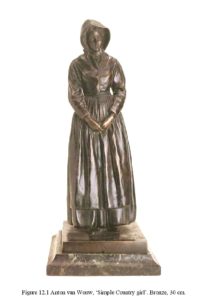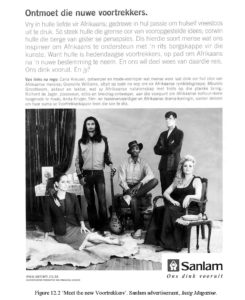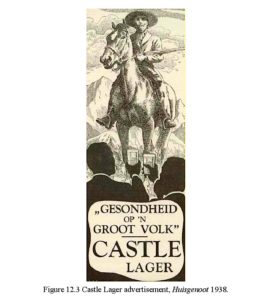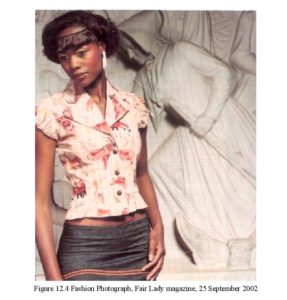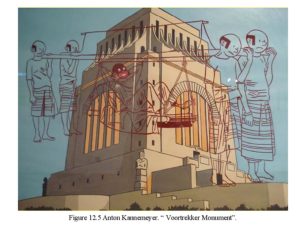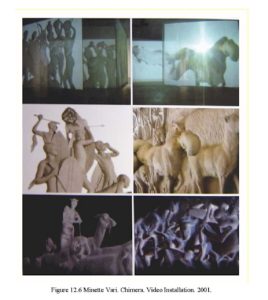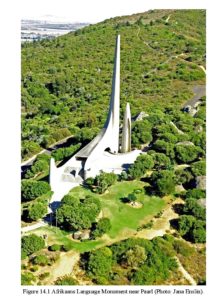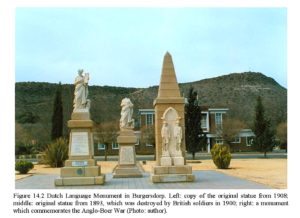Reshaping Remembrance ~ Memories Of Heroines: Bitter Cups And Sourdough
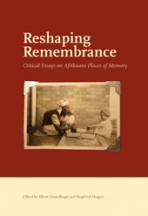 Introduction
Introduction
To write about concentration camps as places of remembrance is an exercise that any curious psychologist will find interesting. While the task of the psychologist is to listen to every memory with earnest compassion, she also has to regard what she is told with suspicion. The psychological undertaking starts with a focus on the conscious memory, but attention is then diverted to those things that are not yet remembered. The project about places of remembrance becomes the project of forgotten places – the holes, the cracks, the gaps, the pauses, the hidden, and, especially, the silences.[i]
When concentration camps are spoken about in this project of forgotten places, it is eventually less about the concentration camps themselves than about the way in which such places become places of remembrance – or not. The question is not so much about WHAT you remember – that is merely the beginning of the process. Other questions become more significant: Who is doing the remembering? When do they remember? Why do they remember? For whom do they remember? And, of course: what are they forgetting?
Waves of memory and forgetting
With these questions in mind, and with regard to memories of concentration camps in the South African War (1899-1902), the first question is when, and under what circumstances, are these camps remembered? Historians and social commentators[ii] give a clear indication of how memories – and forgetting – of the camps come and go in waves.
In the first wave of remembrance (1902-1905) it is immediately apparent how selfconscious the remembering was, and how purposeful the attempts not to forget. E.N. Neethling, in her 1902 account of the war significantly called Should we forget? gives the following reasons for writing the book:
… to induce all good men and women to see and acknowledge the horror, the wickedness of war … so that we realise that we, Afrikanders of the republics and the colonies from the Cape to the Zambesi, are today, more than we ever were before, ONE PEOPLE.[iii]
Neethling’s plea not to forget, even in the early stages, seems to be part of a nationalist project. In the far more emotional Dutch edition of her book, published in 1917 and aimed at Afrikaans readers, there is a bitter command on the title page: NB: This book is not for those who want to forget.[iv]
Most of the many books and pamphlets about the war were either written or compiled by white middle class South African women.[v] Van Heyningen observed that women’s writings in the form of memoirs, diaries and reports play an unusually prominent part in camp historiography.[vi] In these books, the language of remembrance, even in the titles, is mostly intimate, emotional and dramatic: ‘brunt of the war and where it fell’, ‘life and suffering’, ‘wanderings and trials’, ‘women’s sorrow’, ‘the grief of mothers and the pain of children’, ‘war without glamour’, ‘aunt Alie’s diary’.
It seems to be no coincidence that women were the ones documenting memories. In Totius’s 1915 ballad about an old farmer and his life before and after the Boer War[vii] there is a description of the farmer’s bride (or could it be an instruction for her?):
I am just a farmer’s bride
All else I have set aside
No young man should have a doubt
I am what I am inside and out.
But I have two arms, plump and strong
Ready to labour all day long.
I am just a farmer’s bride
Schoolwork I have set aside
When they start politicking
I just listen but say nothing.
But one day I will tell the tale
Of what took place in the Transvaal.
Totius’s farmer’s bride promises innocence, sincerity, naivety, and hard work, and undertakes not to be too clever or politically outspoken. But at the same time she promises to be the keeper of memories.
That they as women will be remembered is a theme that runs through many women’s depictions of themselves. Johanna Brandt, one of the chief custodians of memory, writes in her 1905 account of the Irene concentration camp:
… and these things must be preserved with all the others, good as well as bad, that worked together to make the Afrikaner tribe a nation. Oh, women of South Africa, write up all your suffering at the hands of our mighty oppressors. May nothing be lost, may nothing be forgotten.[viii]
In Die Boerevrou (Boer Woman), the first Afrikaans magazine for women, fiery debates raged about who this ‘Boer woman’ was and what she looked like. For weeks, the chatty letters page (aptly named ‘Around the coffee table’) of this remarkable magazine was flooded with suggestions of who this ‘Boer woman’ was, and is.
The catalogue of qualities is endless. The Boer woman is queen, mother, bride, sister, girlfriend, teacher, housekeeper; she is pure, natural, humble, friendly, loving, humorous, shy; she makes soap, brews coffee, bakes rusks, darns stockings, stitches clothes, slaughters sheep, feeds chickens, manages domestic workers and kisses her husband and children. But she is also someone who remembers. A short story that appeared in Die Boerevrou in 1922 is telling. It is called ‘The memory of a little old bonnet’, and the bonnet herself is the narrator:
And the past, lying at my back? What a fertile pasture is it not for the thoughts of a little old bonnet, who has been through so much, and has shared the shifting fates of so many mistresses… It is almost 85 years ago that I saw the first light of day while on the trek out of the old colony. Sannie’s mother made me on the long road to the North.
The bonnet tells the love story of Sannie and Piet who come to a tragic end when both are savagely murdered by Zulus in separate horrific incidents. The bonnet is theatrical in her bitter resignation:
Yes, Sannie and Piet are better off – their Trek is over – but for the little old Bonnet? So many shifting fates, and in the end, this little spot in the cold Museum, with memories, memories, nothing but memories!
The creation of memory becomes a focused, almost aggressive project. Andriessen, one of the first writers to coin the phrase ‘volksmoeder’ (mother of the nation), tells the story of a commandant Fourie’s daughter in his 1903 pamphlet, The women of the Boers. The girl watched stonily and without tears as British soldiers set her home alight.
When the house had burnt down an English officer asked her for a cup of coffee, which she served him herself. Surprised, he asked her why she would do that, as he had just burnt down her house. According to Andriessen she answered:
Only because it will make our people bitterer and braver when they hear that I still gave you coffee after you stole from us everything we owned. Believe me, our people will take revenge for every cup of coffee you took from us.[ix]
It is obvious that the brave Boer girl makes sure, in Andriessen’s view, that the memory will be bitter. Even as she is performing this task, she is thinking of what ‘our people’ will have to hear and what effect such stories will have on them. In 1920, the editor of Die Boerevrou (Boer Woman), Mabel Malherbe, called on readers to send in their memories:
You must write down what is still fresh in your memory and you must write it like you say it… Who is ready to write these stories? Powerful fare for Boer sons and daughters that will inspire them with lofty ideals and warm love for their country and their people.
We therefore know that women remembered the concentration camps, and that these were early and deliberate memories. It would also appear that they claimed this project of remembrance as part of their identity. So how are we to understand this role adopted by women, women who are normally and typically invisible in patriarchal legends of male conflicts and conquests? To answer this question it is necessary to take a closer look at what is being remembered – and try to pinpoint what is being forgotten.
The stories that women wrote and told about their part in the war are first and foremost about their suffering in the concentration camps. Postma wrote as early as 1918 of a ‘register of horrors’[x] while Van Heyningen remarks that the early tales are ‘accounts of devastation and suffering, tragedy piled upon tragedy.’[xi]
It is however interesting that this first wave of stories is in fact not merely a ‘register of horrors’, but can also be described as an inventory of ‘indomitable resistance’.[xii] The first people to write about the role of women in the South African War emphasise the pain and suffering of the women in the camps, while at the same time arguing that women were not just passive victims of a dreadful tragedy, but played an active and important part in the war. Women and girls are described as activists who played multiple roles far beyond their heroic and stoical acceptance of the suffering they had to endure in the camps.
They were farm managers, soldiers, spies, supporters and letter writers… and they even managed to terrorise the British. What is striking, though, is that underlying all the descriptions of what women did during the war, inside or outside the camps, is a specific idealised image of what women were like or, perhaps, should be like. Neethling describes the purpose of her book as follows:
To write the story of Boer women as they showed themselves during the war, truly, fairly… their strength, their patient endurance, their heroic steadfastness.[xiii]
In 1905 Johanna Brandt writes the following about the concentration camps:
It was a dreadful life in the camp…and everywhere you witnessed the grief… of mothers as they had to watch their children die, of women fearful and anxious for their men and sons in battle; yet you witnessed their courage, their faith and their fortitude, and their trust in God their father – and you developed a deep respect for them.[xiv]
Like Brandt, Neethling emphasises the patience and perseverance of the women in the camps:
The patriotism, the patience, the endurance of the women, has been wonderful. To many a one there was no loss, no hardship, no disappointment she feared so much as that her husband would disgrace his men and surrender. We know of a woman in a camp who had lost her only two children and had suffered much; but when her husband came in, instead of welcoming him, she burst into tears, exclaiming, ‘0, this is the hardest blow of all’.[xv]
Andriessen, who wrote up many of the women’s stories in The women of the Boers, stresses the agency, and even activism, of the women during this time. He tells the story of a Bloemfontein woman who was ordered to bake bread for British soldiers and refused to do so at first, but was forced to comply. The soldiers all fell very ill and it was established that the woman had added copper sulphate to the dough. Another woman, according to Andriessen, refused to help a British soldier, his ‘teeth chattering with fever’, and said to him: ‘I will not help to make you better just so you can go and shoot dead our people.’[xvi] As letter writers, the women, it is told, were relentless in their support of the South African soldiers and encouraged them never to give up. During the war Jan Smuts wrote a letter in which he states:
And yet the women persevere in the most wonderful way; there is almost no letter that is smuggled out of the concentration camps to the commandos that doesn’t encourage the men to persist to death and never to bring the shame of surrender on their families. No wonder that the burghers are so devout, it is as if their spirit is not of man but of God.[xvii]
Andriessen also describes women who did men’s work on the farms in their absence:
The harvest is gathered, the corn cut, bound into sheaths and brought to the loft in the arms of women and children. And that besides, the loyal spouse still cares for the patriarch’s family… she provides the cattle with what they need so that they can be used for ploughing once more… It was painful to witness, the women everywhere… doing men’s work. In the stable and in the fields, women and young girls, women driving the ox wagons, and with such calmness and serenity…[xviii].
Conclusion
The women in these stories are calm, patient, strong, brave, practical, devout – so much so that one may indeed be forgiven for thinking that they are ‘not earthly beings, but of God’. The trauma of the war is carefully noted, but the emotional impact of the trauma (as described in these writings) appears to be quite unusual. Despite all the reports of pain and suffering there are no stories about depression, anxiety, hysteria, hopelessness or withdrawal. The normal symptoms of post-traumatic stress are strangely absent. It is perhaps no wonder that Neethling comments about her own book: ‘(it) may read too much like fiction’, but ‘(t)here is no fiction about it’.[xix] Contemporary readers of these traumatic tales cannot help but wonder whether the flip side of the instruction to remember was indeed also an instruction to forget. It appears that in this early wave of books and stories about the war there was a determination to forget everything that went against the ideal that was created. It meant that even those things that could have been ambiguous were ‘forgotten’. Consequently, we have in the remembrances of our heroines not only the institutionalisation of memory, but also the institutionalisation of forgetting.[xx]
NOTES
i. L-M. Kruger, ‘A tribute to 150 years of Sigmund Freud. Not mastering the mind: Freud and the “forgotten material” of Psychology’, in: Psychoanalytic Psychotherapy in South Africa 14, 2006, 1- 12.
ii. A. Grundlingh, ‘War, wordsmiths and the “volk”: Afrikaans historical writing on the Anglo-Boer War of 1899-1902 and the war in Afrikaans consciousness, 1902-1990’, in: E. Lehmannn & E. Reckwitz (eds.). Mfecane to Boer War: Versions of South African history. Essen: Blane Eule 1992; L-M. Kruger, ‘Gender, community and identity: Women and Afrikaner nationalism in the “Volksmoeder” discourse of Die Boerevrou (1919-1931)’, MA thesis, University of Cape Town 1991; L. Stanley, Mourning becomes. Post/ memory, commemoration and the concentration camps of the South African War, 1899-1902. Bloemfontein: Kraal Publishers 2007; E. van Heyningen, The creation of a mythology, historiography and the concentration camps of the South African War, 1899-1902, 2007.
iii. E.N. Neethling, Should we forget? Cape Town: H.A.U.M. 1902, 127-128.
iv. E.N. Neethling, Vergeten? Cape Town: Nasionale Pers 1917.
v. Examples of titles are as follows: E.N. Neethling, Should we forget? Cape Town: H. A.U.M. 1902.; W. Riem Vis, Tien maanden in een vrouwenkamp. Het leven en lijden van een boerengezin in Transvaal tijdens den laatsten oorlog met Engeland, 1902; J.A. de la Rey, Mijne omzwervingen enbeproevingen gedurende den oorlog, 1903; J. Brandt, Het concentratie-kamp van Irene, 1905; J. Van Helsdingen, Vrouweleed. Persoonlijke ondervindingen in de boereoorlog, 1918; L. Boshoff- Liebenberg, Moedersmart en kinderleed of 18 maande in die konsentrasiekampe, 1921.
vi. E. van Heyningen, The creation of a mythology, historiography and the concentration camps of the South African War, 1899-1902, 2007.
vii. Totius, Trekkerswee. Potchefstroom: A.H. Koomans 1915.
viii. J. Brandt, Het concentratie-kamp van Irene, Cape Town: H.A.U.M. 1905, 123.
ix. W.F. Andriessen, De vrouwen der boeren. Place unknown: Publisher unknown 1903.
x. W. Postma, Die Boervrou. Moeder van haar volk. Bloemfontein: Nasionale Pers 1918.
xi. E. van Heyningen, The creation of a mythology, historiography and the concentration camps of the South African War, 1899-1902, 2007.
xii. H. Giliomee, The Afrikaners. Biography of a people. Cape Town: Tafelberg 2003, 256.
xiii. E.N. Neethling, Should we forget? Cape Town: H.A.U.M. 1902.
xiv. J. Brandt, Het concentratie-kamp van Irene. Cape Town: H.A.U.M. 1905, 11.
xv. E.N. Neethling, Should we forget? Cape Town: H.A.U.M. 1902, 5-6.
xvi. W.F. Andriessen, De vrouwen der boeren. Place unknown: Publisher unknown 1903, 84-85.
xvii.W.F. Andriessen, De vrouwen der boeren. Place unknown: Publisher unknown 1903, 86.
xviii. W.F. Andriessen, De vrouwen der boeren. Place unknown: Publisher unknown 1903, 80-81.
xix. E.N. Neethling, Should we forget? Cape Town: H.A.U.M. 1902, i, iv.
xx. I. Hofmeyr, ‘Popularizing history: The case of Gustav Preller’, in Journal of African History, 1988, 29.
xxi. M. Foucault, Discipline and punish. The birth of the prison. London: Penguin 1977.
xxii. L-M. Kruger, ‘Gender, community and identity: Women and Afrikaner nationalism in the ‘Volksmoeder’ discourse of Die Boerevrou (1919-1931)’, MA thesis, University of Cape Town 1991.
References
Andriessen, W.F. De Vrouwen Der Boeren. Place unknown: Publisher unknown 1903.
Brandt, J. Het Concentratie-Kamp Van Irene. Cape Town: H.A.U.M. 1905.
Foucault, M. Discipline and punish. The birth of the prison. London: Penguin 1977.
Giliomee, H. The Afrikaners. Biography of a people. Cape Town: Tafelberg 2003.
Grundlingh, A. ‘War, wordsmiths and the “Volk”: Afrikaans historical writing on the Anglo-Boer War of 1899-1902 and the War in Afrikaans consciousness, 1902-1990’, in: E. Lehmann & E. Reckwitz (reds.). Mfecane to Boer War: Versions of South African history. Essen: Blane Eule 1992.
Hofmeyr, I. ’Popularizing history: The Case of Gustav Preller’, in: Journal of African History 29, 1988.
Kruger, L-M. ‘Gender, community and identity: Women and Afrikaner nationalism in the “Volksmoeder” discourse of Die Boerevrou (1919-1931)’, MA thesis, University of Cape Town 1991.
Kruger, L-M. ‘A tribute to 150 years of Sigmund Freud. Not mastering the mind: Freud and the “forgotten material” of Psychology’, in: Psychoanalytic Psychotherapy in South Africa 14(2) 2006, 1-12.
Neethling, E.N. Should we forget? Cape Town: H.A.U.M. 1902.
Neethling, E.N. Vergeten? Cape Town: Nasionale Pers 1917.
Postma, W. Die Boervrou. Moeder van haar volk. Bloemfontein: Nasionale Pers 1918.
Stanley, L. Mourning becomes. Post/Memory, commemoration and the concentration camps of the South African War. Manchester: Manchester University Press 2006.
Totius. Trekkerswee. Potchefstroom: A.H. Koomans 1915.
Van Heyningen, E. The creation of a mythology, historiography and the concentration camps of the South African War, 1899-1902. 2007.
